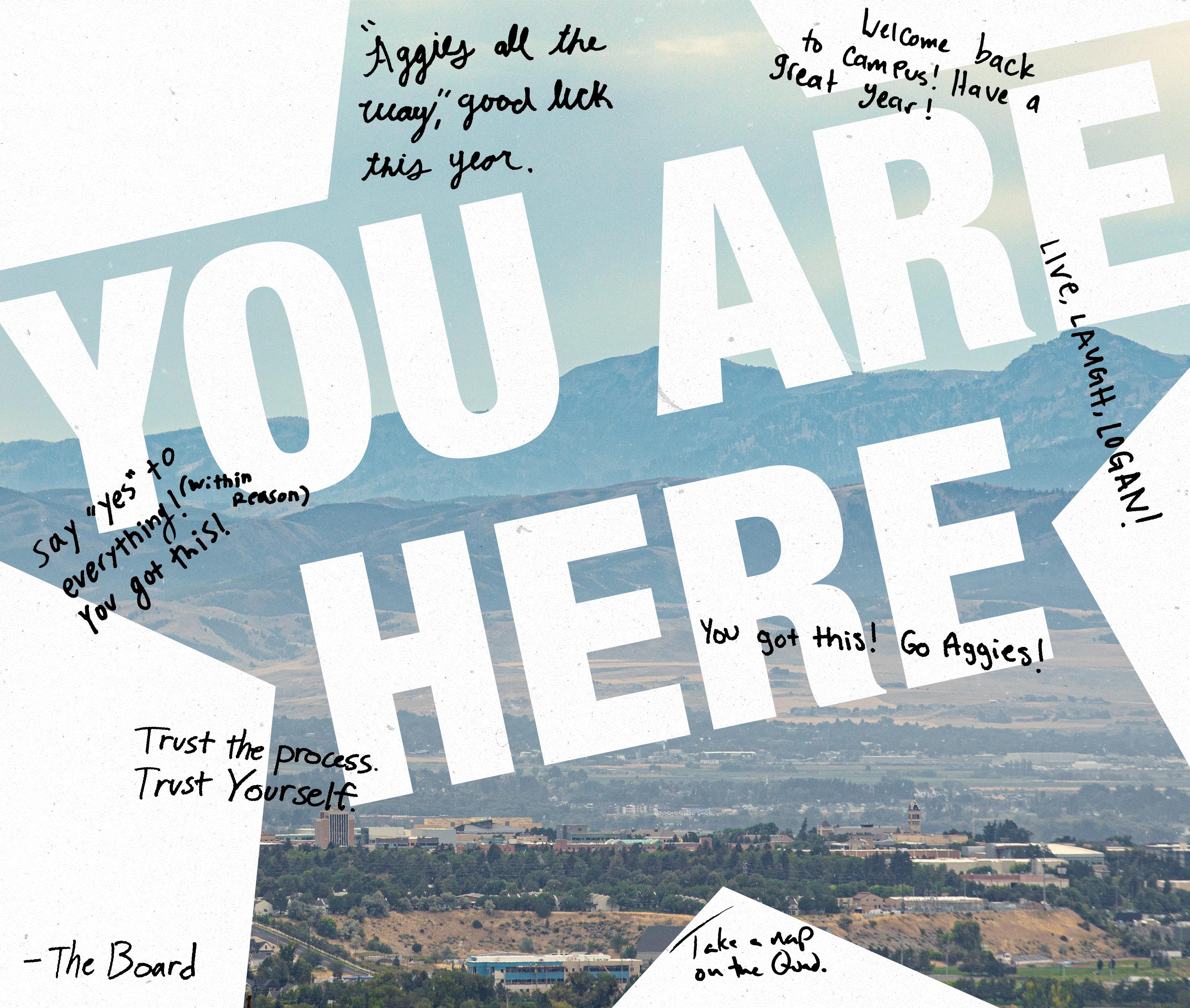

First class of veterinary medicine begins with white coat ceremony
By Bailey Daniels STATESMAN SENIOR REPORTER
After a century, Utah State University will at last welcome its first class to complete a Doctor of Veterinary Medicine. The historical White Coat Ceremony took place at the Eccles Conference Center on Aug. 16 as the class of 2029 lined up to receive their coats in preparation for fall semester. This is the first class in Utah with the opportunity to complete all four years of their DVM degree in the state.
Dr. Dirk Vanderwall, DVM, Ph.D, is the dean of the USU College of Veterinary Medicine and spoke at the event, explaining why this milestone took as long as it did.
“We’re all familiar with the proverb, ‘Good things come to those who wait,’” Dirk said. “That’s very particularly relevant for today’s ceremony because this occasion has been in the making for 118 years.”
Dirk went on to explain that in 1907, the board of trustees at what was then known as the Agricultural College of Utah approved a plan to offer a DVM degree. However, the college did not meet the national requirement, which stated that four veterinarians needed to be on the faculty, as they only had two.
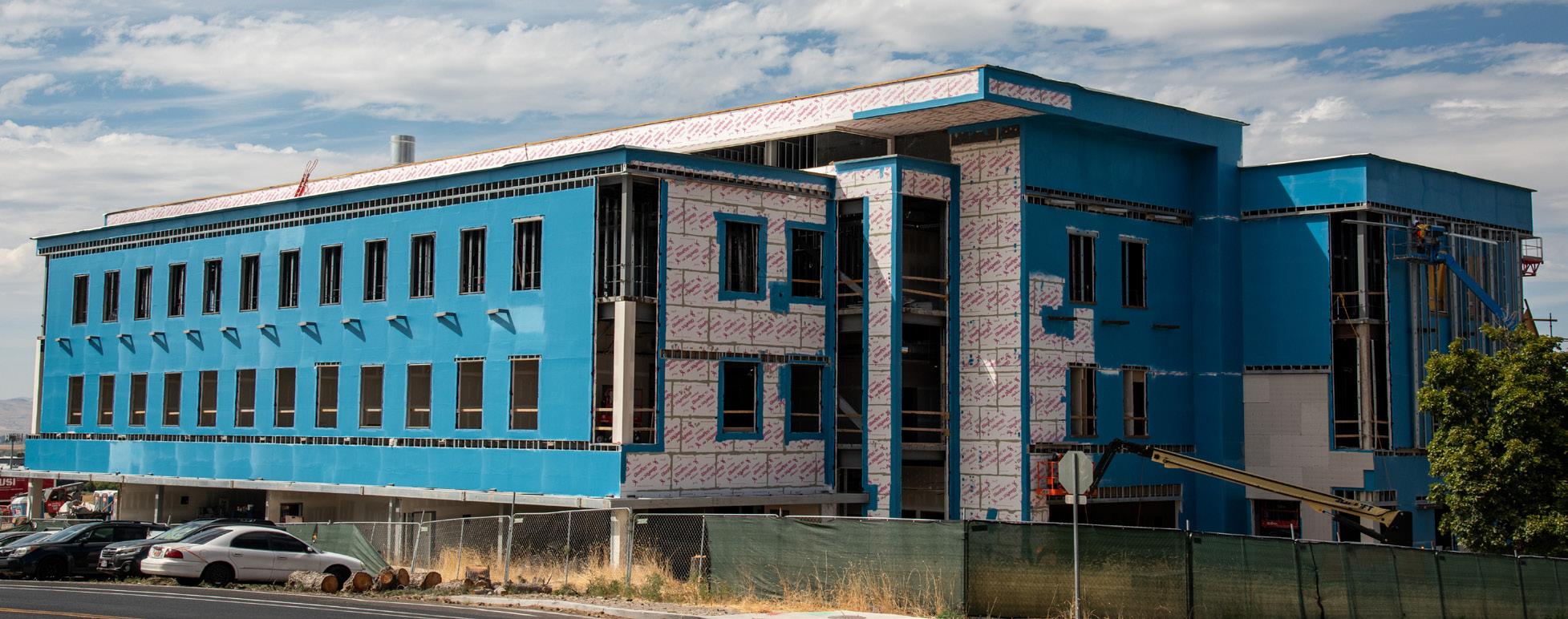
In 2012, USU joined the Washington-Idaho-MontanaUtah Regional Program in Veterinary Medicine. This enabled Aggies to obtain their DVM by studying at USU for half of their degree and then finishing up the last two years at Washington State University.
The success of this program generated support from Utah legislators in 2022, and the funding to open the college program was approved. This made USU the first and only school in Utah to offer all four years of this degree.
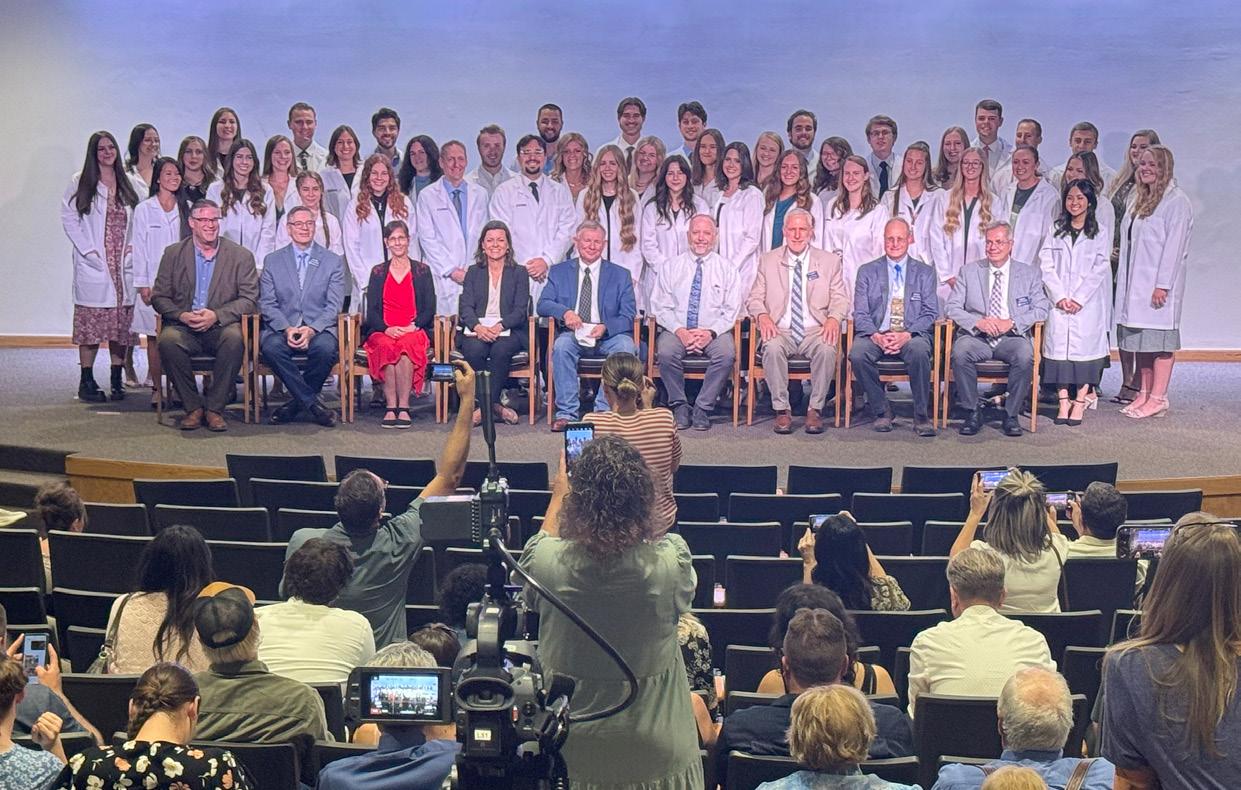
“As a result, the idea for a veterinary college at that time remained dormant for more than 70 years until 1977 when Dr. Kent Van Kampen and colleagues produced a report entitled, ‘The Feasibility of Establishing a School of Veterinary Medicine in Utah,’” Dirk said. “In that report, they quite prophetically determined that Utah would not need a school of veterinary medicine until sometime after the year 2000.”
Dr. Helosia Rutigliano, DVM, serves as the associate dean with the college at USU and was also a speaker at the ceremony. She spoke about the meaning of the event and explained what the white coats symbolize, as it represents more than an article of clothing.
“It is a representation of the trust that society places in you, the responsibility that you now carry and the commitment to ethical and compassionate care that will guide you throughout your studies and careers,” Rutigliano said. “It is a reminder of the oath you will take later today that you will serve your patients and their owners and the broader community with integrity, respect and empathy.”
Dirk said in an interview with The Utah Statesman that USU’s DVM class of 2029 chose 42 students after receiving over 300 applications, including 27 Utah residents and 15 non-resdients. “It’s exciting to help meet the demand for more veterinarians,” Dirk said. “Their dream of becoming a veterinarian and helping fill the need for more veterinarians serves the need of the profession.”
Aggies may have noticed ongoing construction at 1400 N. and 1200 E. on Logan campus. This building will become the Veterinary Medical Education Building. Set to be completed in the summer of 2026, the new building will enable the degree to double its admission for the class of 2030 up to 80 students.
Dirk spoke about some of the features of the building, including sunlight and active classrooms that can easily be reorganized for different types of learning. Whether the new students are interested in working with animals small or big, rural food supply or veterinary medicine, the building is designed to accommodate them.
“In all of those areas of the profession, there’s a need for more veterinarians, and we will be helping full that need with the new program,” Dirk said.

Bailey Daniels is a junior studying technology systems. She loves Lana Del Rey, sweet treats and all things whimsical.
— bailey.daniels@usu.edu
PHOTO BY Jack Burton
Construction continues on the Veterinary Medical Education Building on 1400 N. and 1200 E, as seen on Aug. 21.
SUBMITED PHOTO College of Veterinary Medicine students and faculty pose for a photo after the White Coat Ceremony.
Welcome Back, Aggies!
Whether you’re stepping onto campus for the very first time or returning for your final year, I want to officially welcome you to the Aggie Family and to what will be some of the most meaningful years of your life.
To our new students, whether you’re from just down the street, across the country or even the around the world, you’re now part of something much bigger than yourself: the Aggie Family that spans all 50 states and more than 40 countries, from our 30+ campuses and centers across the state of Utah.
As we begin this new academic year, I want to share some updates. Utah State is entering a new chapter and so are you. Over the past year, the university has been focused on reinvesting in students, faculty and the future of our programs. Part of that includes a realignment of academic colleges to better support collaboration and innovation. Starting this fall, USU is moving from eight colleges to six. Here’s what’s new:
The S.J. & Jessie E. Quinney College of Natural Resources and the College of Agriculture and Applied Sciences

have merged into the new S.J. and Jessie E. Quinney College of Agriculture & Natural Resources, led by interim Dean Grant Cordon.
The College of Humanities and Social Sciences, the Caine College of the Arts and the College of Science are combining to form the new College of Arts & Sciences, led by Dean Joe Ward.
We’re proud to launch the College of Veterinary Medicine, the first and only of its kind in Utah, led by inaugural Dean Dirk Vanderwall.
Your college experience is what you make of it. Whether you’re focused on your degree, finding your people or just figuring things out as you go, USU is a place where you’re supported, seen and valued.
USUSA, your student government, is here to represent, support and empower you every step of the way. If you ever have thoughts, concerns or ideas, don’t keep them to yourself — use the MyVoice platform at www.usu.edu/involvement/student-association/student-advocacy/my-voice to submit feedback directly to your student body officers. We’re here to listen and act.
Here are my three tips for making the most of your time here:
First: Get involved. Join a club, attend an event, show up to a game or join USUSA, even if it’s out of your comfort zone.
Second: Use your resources. From academic advisers and mental health counselors to financial wellness support and career services, there are people here whose whole job is to help you succeed, and it’s FREE for you.
Third: Don’t be afraid to be yourself. College is a fresh start. Be open to new perspectives, make room for mistakes and give yourself grace. Some of your most important learning won’t happen in the classroom — it comes from the people you meet, the challenges you face and the growth you experience along the way. I always say college is 50% classroom learning and 50% life learning.
To every Aggie reading this, know that you are ready. You have what it takes.
Let’s make this year one to remember.
Go Aggies!
Brandon Sorenson, USUSA president — president.ususa@usu.edu

After a year of HB261, Communications professors study on impact of the legislation on campuses across

what programs were on websites and when those were removed,” Allen said. “So, a lot of what we’re finding is that there’s just so much dismantling that we don’t know about unless you’re a student who’s being directly impacted.”



By Malory Rau STATESMAN EDITOR
In Spring 2024, associate professor Nicole Allen and assistant professor Syndey O’Shay in the Department of Communication & Media were sitting in a staff meeting when they first heard how House Bill 261, Equal Opportunity Initiatives, would be implemented on Utah State University campuses.
“We just kind of sat there in disbelief,” O’Shay said. “We know the power of language, and we know that when you say we can’t say something, it makes that word a dirty word, which
means that saying we can’t say ‘diversity’ makes ‘diversity’ a bad word. It makes ‘equity’ a bad word. We know there are consequences to that, and so we knew this was going to be more than just changes of names and centers. We knew students were going to be truly impacted.”
A year later, after watching HB261 come into full effect, Allen and O’Shay launched a study looking into the impact the bill has had on the well-being of students across Utah.
“There’s no central database of what is being closed and dismantled and what’s being renamed and the changes. A lot of the research that I’ve been doing is going back and forth to see
in any way, at least, that they were trying to combat what was happening… And I think at the end of the day, the students are the one who are paying for the school. Like, yeah, there’s the state funding and there’s donors and everything. But, without students, it wouldn’t run. And so, I think that you [USU] have to care for the students more than what you’re [USU] doing,” participant 11 said.
The pair was able to conduct a remote focus group with students from every public university in the state, excluding Utah Tech University due to a lack of interest. There were 44 total participants who were kept anonymous, identified only by a number, and divided into 13 focus groups. The age range of students, both graduate and undergraduate, was 18–36. Participant interviews were transcribed, and the research document with written quotes was shared with The Utah Statesman.
Finding One:
Frustration over swift compliance
Students appeared to be disappointed in a lack of response from their universities. Specifically, USU students voiced disappointment in a lack of pushback against this piece of legislation.
“It’s overwhelming, seeing, like, how much Utah State shut down,” participant 32 said.
Participants agreed upon feeling like their needs as students were overlooked by the university in response to legislation.
“I think that they [USU] are obligated to push back. I think that as a student, I would have felt that they cared about us so much more if they had gone down fighting. Like, not down completely. Not to the point of shutting down, but just, like, showed
Finding Two: Solving a problem that did not exist
Participants across the state seemed to be confused about the need for HB261 and argued it was attempting to solve a nonexistent problem.
“I feel like this law was made out of ill intent. And, no matter the way that they choose to frame it, it doesn’t support or doesn’t promote equality like they hope it would have. It was specifically intended to hurt groups,” participant seven said.
Many shared they were frustrated by the disbanding of identity-based clubs and organizations.
“Even if we don’t identify in one of the particular clubs, we don’t see how it’s harming anyone. So, a lot of what I’ve heard is, even from people who aren’t in any of the of the groups that have been closed, is just like, why did this happen? … I literally haven’t met anyone who was like, ‘I’m very glad that this [resource] closed because I felt discriminated against.’ I’ve only heard people talking about, you know, why? Why did that happen? Like that [HB261] doesn’t really seem to be helping anyone,” participant 37 said.
Finding three: Feelings of erasure
“It’s a loss of community. It’s a loss of support. Loss of space,” participant seven said.
O’Shay echoed loss of space seemed to be one of the major ways students felt direct negative impact from this legislation.
“After the bill passed and the changes were implemented, students who walked by centers that previously existed and were now gone every day felt like they were walking by a wound. It was like a void that was there of what had been,” O’Shay said.
ARTWORK BY Kaylee Robinson
professors conduct research across state of Utah
Aside from the loss of space, students felt the act of removing identity-based services and organizations is a reflection of how their respective universities value them as students.
“For me, it’s just a reminder that as much as the university says it cares about its students, it cares about the lawmakers and the money side of it more. …So, I feel like they just completely ran with it [HB261] so quickly. So, it just reminds me that they don’t actually have the students’ best interest at heart. And I think a lot of students are seeing that. I know some people who are transferring after this year because of these changes, or who are trying to go through their degrees faster to leave because they don’t feel like they belong,” participant 37 said.
Finding Four: Looking for once-guaranteed resources
The participants discussed they now feel left to their own devices to face certain identity-based challenges in private.
“There used to be some communities I used to go to— [The] Inclusion Center. I used to meet other international students [at the International Student Council]. Now, [I] just didn’t this year. So, I don’t know who is new [or] what everyone is doing. You know, you lose connections,” participant 18 said.
Allen explained due to another bill, HB265, Higher Education Strategic Reinvestment, which went into effect July 1, students are struggling to follow which closures are due to which of the two bills.
“They noticed that a lot of this legislation was layering, and it was very difficult for them to understand what was 261 or HB265, which is the budget reallocation, budget cuts, but what kind of came through in the data is that they were targeted by these things. So, while they couldn’t parse out what was 265 and what was 261, they saw all these resources being closed,” Allen said.
Finding Five: Barriers at USU
USU students spoke about student clubs that have dissociated with the university completely due to certain challenges being imposed upon them. For example, the Queer Student Alliance has
stepped away from USU because leadership felt they could not continue to operate under restrictions being imposed.
“BSU [Black Student Union] has gone under very long, long and just tedious paperwork to become a USUSA club that other organizations haven’t had to go through because they bring a budget with them from their previous club. And they had to fight to keep their money and not for it to be distributed [to] other people, because it was directly donated for the Black Student Union club, and not for USUSA as a whole,” participant seven said.
What’s Next?
Allen and O’Shay have completed the focus group portion of their study and plan to take their findings further. Their next steps include more data collection, surveys and interviews once students are settled back on campus for the fall semester.
“Many students still don’t even know about it. They might have realized ways — notice ways they’ve been impacted but not have made the connection,” O’Shay said.

Malory Rau is a senior sudying journalism. She can be found thrifting, doing yoga or hanging around Aggie Radio. — m.rau@usu.edu
FREE BOOKS for your book Club! Are you in a book club or want to start one?
Did you know that The Utah State Library has more than 800 titles for your use?

check it out!


Tremonton community in mourning after deaths ofw two police officers
On Sunday, Aug. 17 at 700 N. and 200 E. in Tremonton, Officer Eric Estrada and Sgt. Lee Sorensen were shot and killed while responding to a domestic disturbance call.
Another officer and police K-9 were also injured in the shooting but have been discharged and returned home.
The suspect is 32-year-old Ryan Bates, who is currently in custody. Prosecutors are seeking death penalty for capital offenses.
A public procession, starting in Taylorsville and ending in the officers’s respective home towns of Logan and Garland, was held Monday evening.
Details on funeral plans for both officers are awaiting announcement.
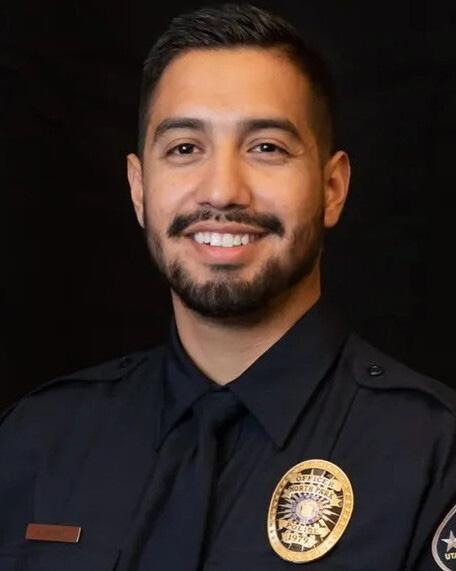

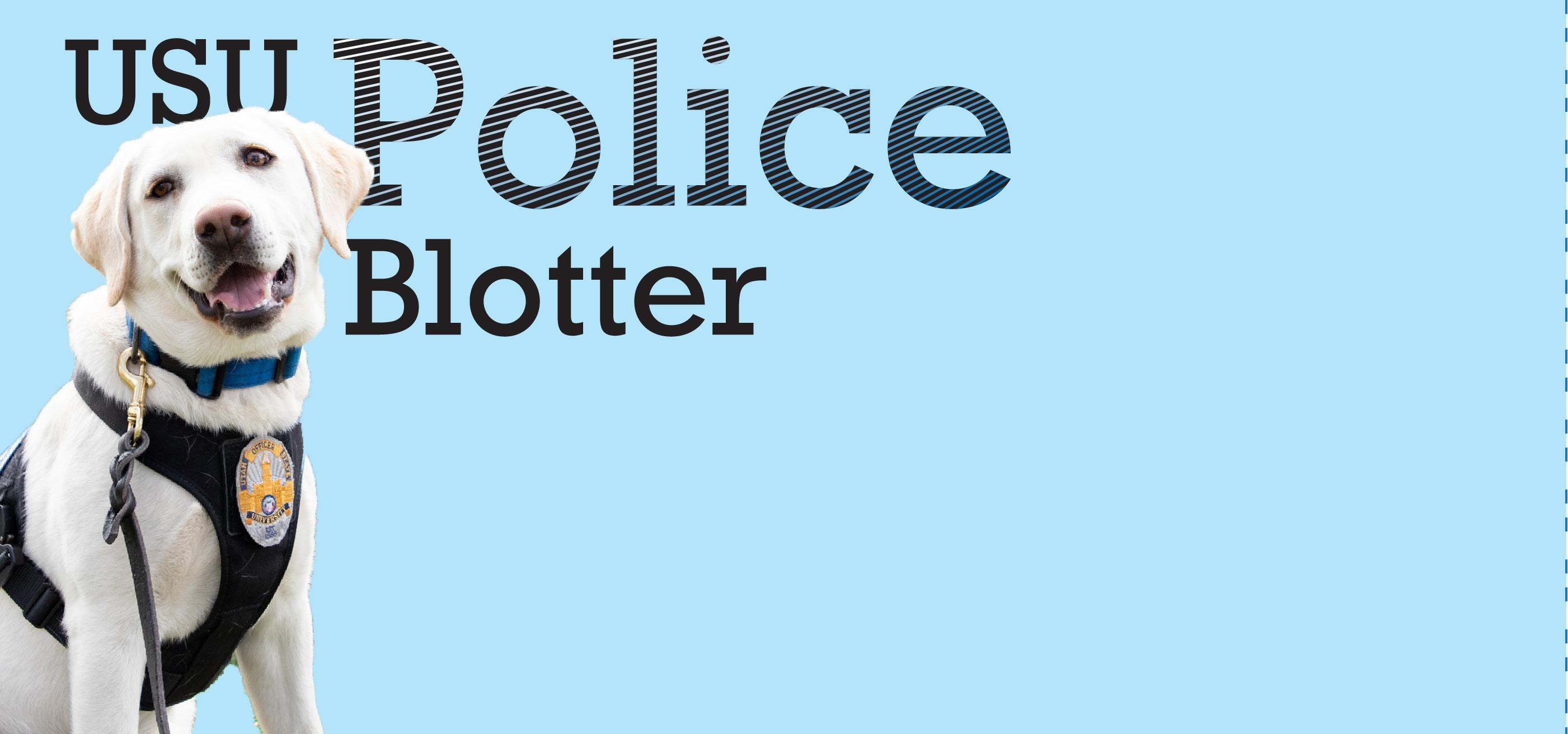
August 9
Officers were dispatched to the incident address on the report of two dogs left in a black Nissan Rogue with an unknown license plate. On scene, officers did not observe any vehicle matching that description in the parking lot. No further action was required.
August 10
A USU police officer was dispatched on reports of a snake being sighted. The reporting indivduals were concerned the snake was venomous. Once on scene, the officer located a garter snake and identified it as a harmless species. No further action was needed.
August 16
Officers received a report of a social media post detailing a suspicious incident taking place at Maverik Stadium. USU officers and security officers checked all of the surrounding athletic fields in the proximity of USU. Security officers checked waste receptacles in the stadium where an event was taking place and did not find anything of concern.
August 16
One individual was transported to Logan Regional Hospital with a serious injury.
August 18
USUPD presented campus safety information at New Employee Orientation at the West Stadium Center.
STATESMAN STAFF REPORT
Officer Eric Estrada
Sgt. Lee Sorensen




















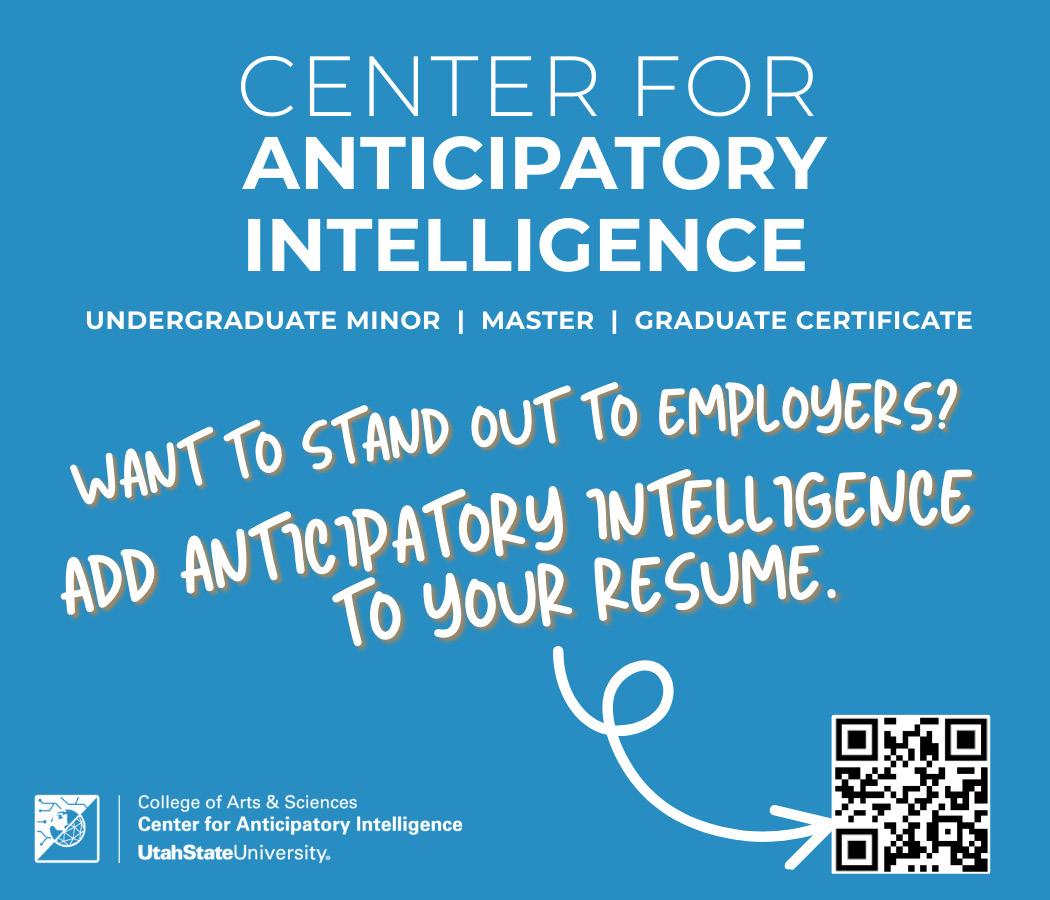




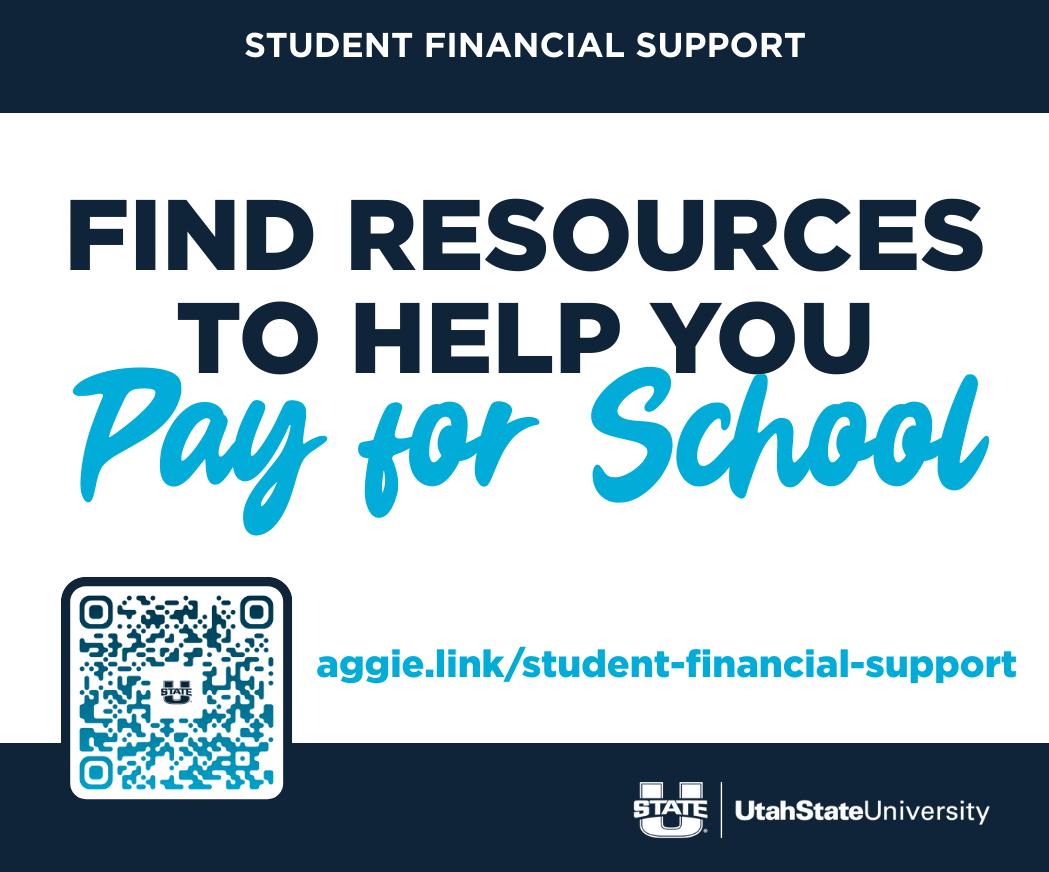


























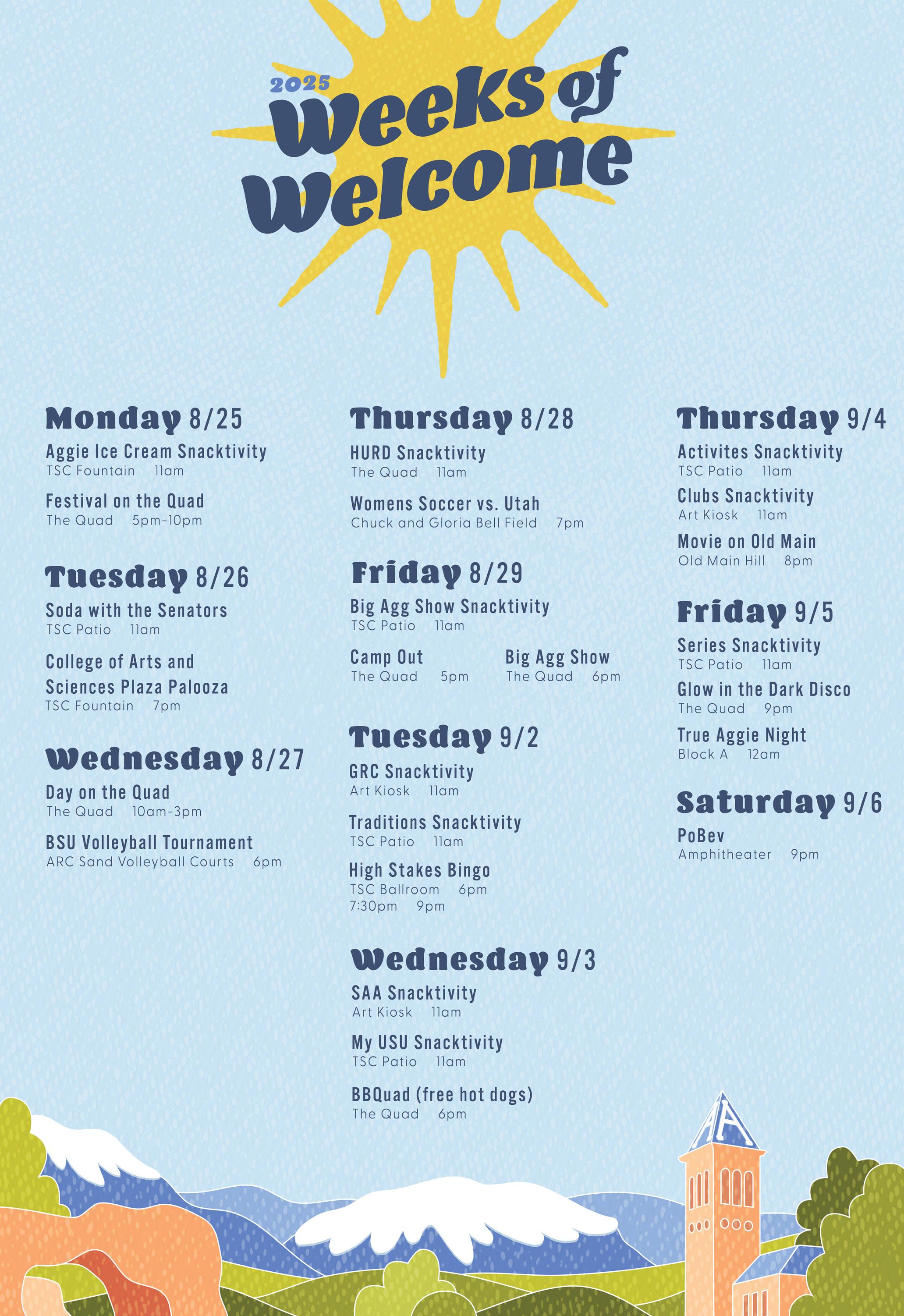













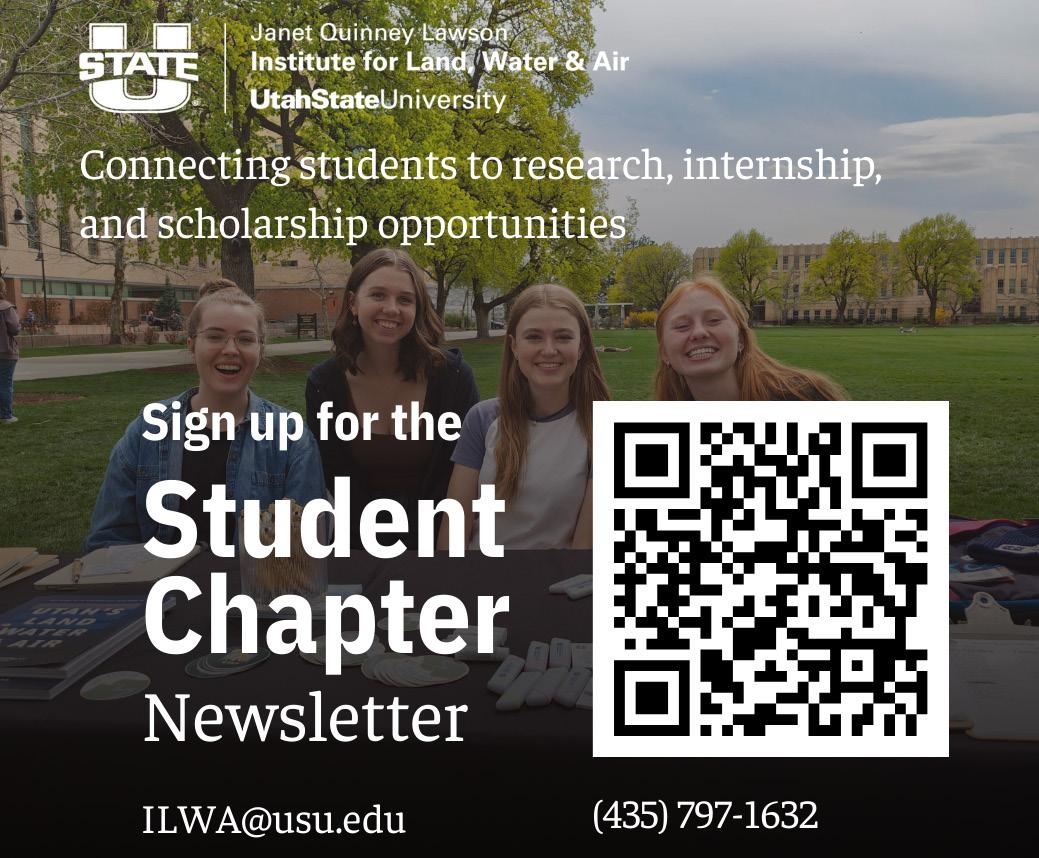





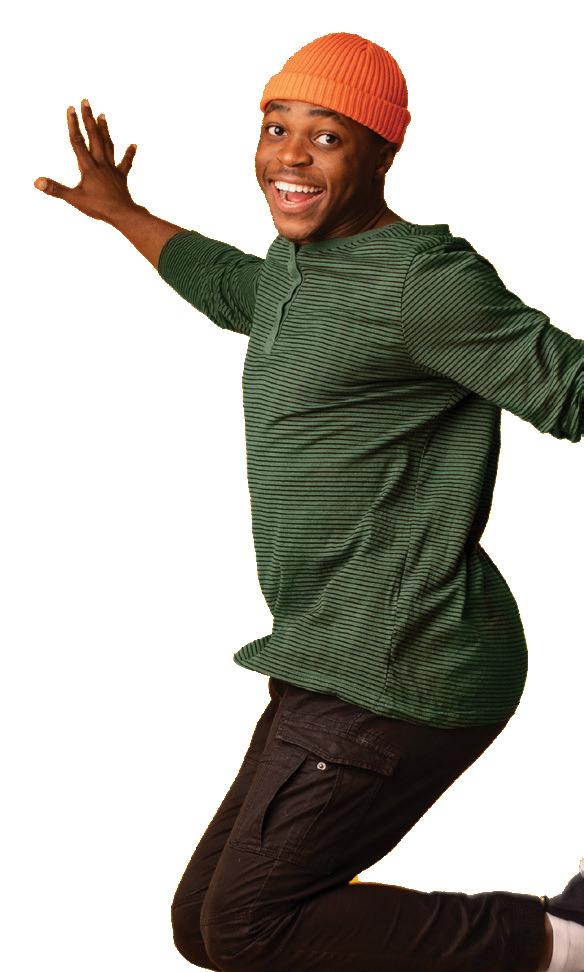






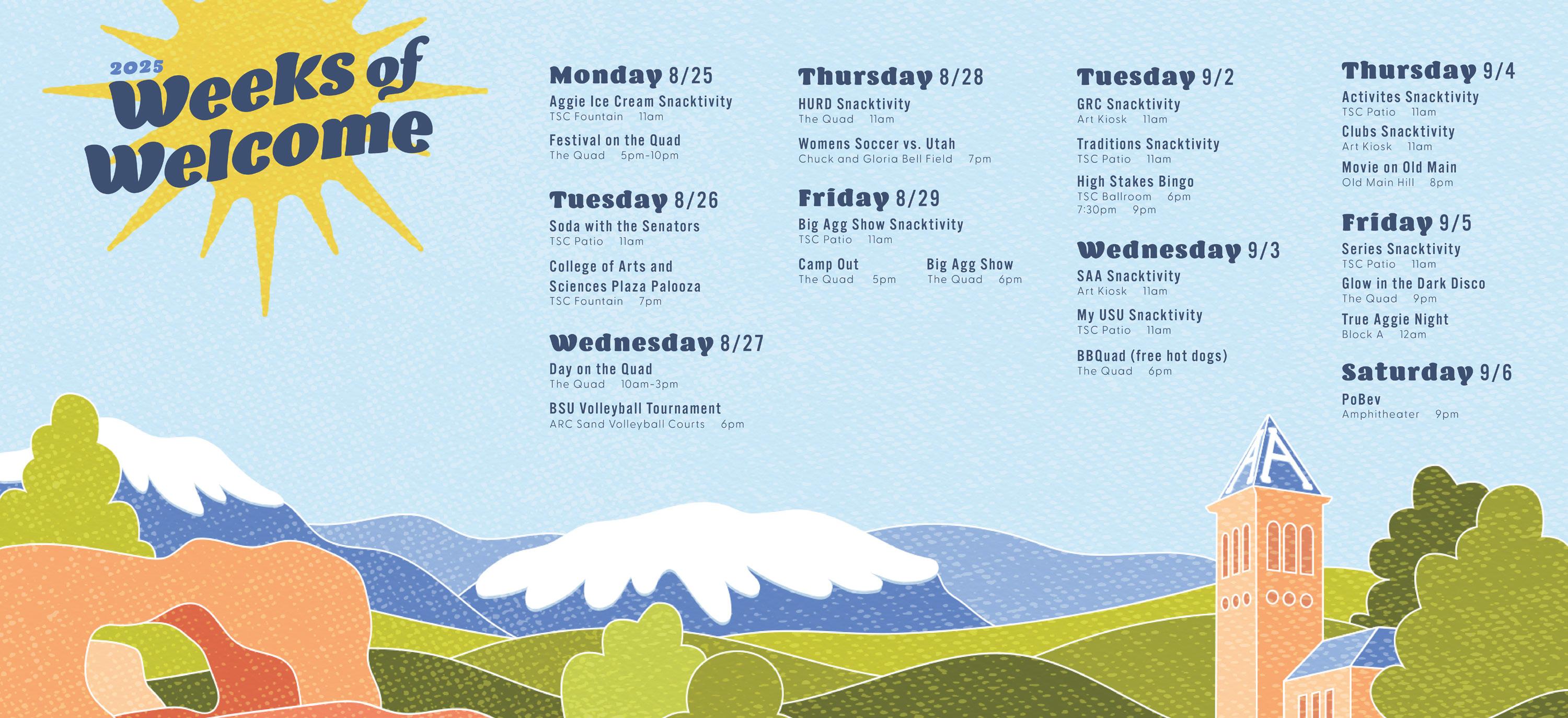



Alumni give advice to new Aggies
By Sam Isaacson STATESMAN SENIOR REPORTER
College is a pivotal time for new students, and by choosing higher education, they accept the big changes that come with it. Many of the students who are attending Utah State University this fall will be moving away from home and finding their independence for the first time in their life. Such big changes can be overwhelming, especially when students don’t know what to expect from those first few weeks at college.
Once students have moved in and settled into their housing, it is time to focus on preparing for the semester. Ethan Ford, who graduated from USU last spring with a bachelor’s degree in computer science, said it’s important to put yourself out there and socialize in those first few weeks at college instead of staying in your room.
“I think giving yourself too much space in the first two weeks is the worst thing you can do. Everyone is in the same boat as you. No one knows anybody,” Ford said. “You should be trying to get out and socialize because if you wait, then the phase of everyone meeting each other is over. It is a time when you should be putting yourself out there and then taking more space a little later in the semester. My first year, I made the mistake of not putting myself out there and ended up isolating myself.”
Students settling into their new classes and getting used to college can get overwhelmed by how fast campus life can be. Nathan Dunn, who graduated with a bachelor’s in public relations from UVU and got his associate at USU, said getting out and seeing what the campus had to offer helped him slow down and enjoy his first few weeks at USU more.
“Going to the ARC, going outside to enjoy nature, going to public events on campus — these are all good options,” Dunn said. “Enjoy the little things and don’t worry about making an impact right off the bat. You’re not going to get your degree overnight. Just relax and enjoy these first few weeks of being an adult and being on your own.”
A great option for students to socialize and learn more about the campus is USU’s annual Weeks of Welcome. For the first two weeks of school, USU will be hosting events like Day on the Quad, High Stakes Bingo and many more. The full Weeks of Welcome schedule is available at www.usu.edu/involvement/ welcome.
While it is important for students to take time to socialize and enjoy themselves, it’s also important for students to remember to focus on their classes as well.
Debra Monson, associate professor for the USU Department of Communication and Media, said it’s important students look into what is expected of them for their classes and introduce themselves to their professors when the semester starts.
“Spend the first week really going over the syllabus and the Canvas schedule and integrate it with your regular work/life schedule so you know when every-

thing is due,” Monson said. “I have so many students who get caught at the end of the semester by assignments they missed.”
Monson said it’s also important students are utilizing campus resources when doing coursework.
“If you haven’t been to the library, you need to go to the library and talk to a librarian,” Monson said. “When you walk in, there is a huge display of all the content expert librarians there who can help you with any assignment throughout the semester. The library is an amazing resource as a physical space, and unfortunately, I think we’ve gotten used to mostly using it as an online resource.”
College students learn and experience so much during the years they spend at college. Ford said his advice to new students is to remember why they chose to attend college.
“One of the main reasons you go to college is to learn and figure out what you want to do for the rest of your life,” Ford said. “I feel like sometimes when people go to college, they get lost in partying and being independent. They end up not really caring about what they will be doing when they get out of college. You don’t need to figure out what degree you want to graduate with right away, but you need to be willing to dedicate yourself to figuring it out.”

Sam Isaacson is a senior studying journalism with a double minor in art and psychology. She is passionate about human rights, animal rights and climate change. — sam.isaacson@usu.edu


Thursdays from 6–7 p.m., host Max Murray brings “Max Capacity” to Aggie Radio 92.3 FM with hip-hop, house and everything in between! Good thing the radio waves don’t have a fire code.
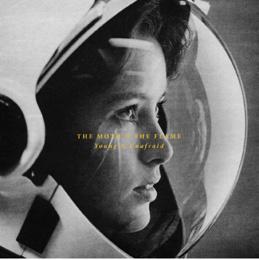

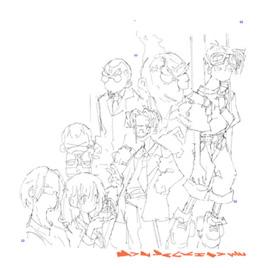

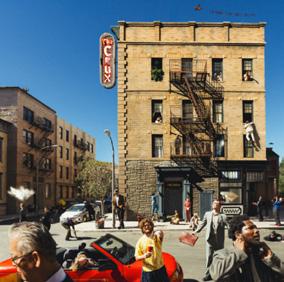






STATESMAN FILE PHOTO
New students walk across campus in the Luminary procession on Aug. 23, 2024.
USU Football embraces new era at Media Days
By Carson Frost Statesman Senior Reporter
Utah State head coach Bronco Mendenhall, senior quarterback Bryson Barnes and senior defensive tackle Gabriel Iniguez represented the Aggies at the 2025 Mountain West Football Media Days on July 16–17, marking a new chapter in the program’s ongoing transformation.
Mendenhall and his players took the stage for extensive interviews following the decision to keep spring practices closed to the public — an intentional move to limit exposure during the post-spring transfer portal window. Mendenhall said fall camp will be more accessible but balancing program security with public engagement remains a priority.
“Before we played, it just made no sense for anyone to know who we had,” Mendenhall said in an interview with KSL. “[At] fall camp, there will be opportunities for people to come see scrimmages and things, but as long as the second window is post-spring practice, then I think as the steward of the program, I have to do that.”
Hired last December, Mendenhall has overseen one of the most significant roster rebuilds in the country, bringing in 87 new players through recruits, transfers and carryovers from his time at New Mexico. With the
2025 roster expected to include over 105 players, more than 75% will be newcomers.
Despite the turnover, Mendenhall expressed confidence in the direction of the program and the players leading it.
“I love my team,” Mendenhall said. “They’re working like crazy. They’re hopeful, optimistic and have really good leadership and alignment. It hasn’t felt like 87 new guys because of their maturity and commitment.”
Mendenhall’s tenure began with what some players described as one of the most physically demanding spring camps they’ve ever experienced. The veteran coach acknowledged the intensity was by design, a tool for building team identity and endurance.
“The harder things they do, the more it galvanizes relationships — the more it solidifies the investment after the initial who’s in and who’s out,” Mendenhall said. “And so, my approach is: the harder the better. Those relationships and that identity is forged faster, and we were under the clock.”
Amid the challenges of player retention and the allout war of spring camps, Mendenhall said an unlikely outcome has emerged: stability. Unlike many programs navigating the modern transfer portal era, Utah State saw fewer spring departures than anticipated. Menden-

hall believes his proactive communication with returning players and vetting of incoming transfers helped keep his offseason roster intact.
“Usually, about a third of the team leaves after the first offseason,” Mendenhall said. “That number was significantly less here because of the front work we did. Probably the lowest turnover I’ve ever had going through an offseason was here.”
Among the leaders helping shape the new team are the seniors Barnes and Iniguez, both of whom bring experience and toughness to the roster. Barnes, a transfer from Utah, has quickly become the presumed leader on offense.
“If I went out and just tried to pick someone to be our quarterback or the leader of the team, I couldn’t have picked better,” Mendenhall said.
Barnes praised his new coach for setting the bar high and creating a winning environment.

Preseason praise fuels USU volleyball title ambitions
By Carson Frost Statesman Senior Reporter
After a transitional 2024 season filled with highs and lows, Utah State volleyball enters 2025 with renewed confidence and continuity.
With the program’s youngest roster in recent memory maturing rapidly, a strong core of returning sophomores combined with experienced upperclassmen could help USU reclaim its place atop the Mountain West.
The MW preseason coaches poll projects the Aggies to do just that. Utah State was picked to finish first in the conference, earning seven of 12 first-place votes and 114 total points. Senior middle blocker Tierney Barlow and sophomore setter Kaylie Kofe were also named to the all-Mountain West preseason team.
Barlow, who has collected numerous career awards, called the early recognition a “great honor” but said her focus remains on the season ahead.
“I feel like with the preseason awards, I don’t take it too much to heart,” Barlow said. “Rob [Neilson] tells us that it’s earned, not given. So, we’re given these amazing awards, but we still have to work hard in the gym and earn that title of number one in the conference.”
The team retained nearly its entire roster from a year ago. Last year’s group included 12 first-year players, and the team was able to overcome a 3–10 start to finish 15–14 overall and 12–6 in Mountain West play, earning a share of second place in the conference standings.
Barlow believes last season’s late surge laid the foundation for 2025.
“The way we ended kind of gave us some grit on our shoulder,” Barlow said. “It felt really good to go as far as we did with such a new team. Because of the growth we had last season, this offseason was so much cleaner. We were able to work hard and not focus so much on all the things we needed to learn.”
Under head coach Rob Neilson, the Aggies claimed three straight Mountain West titles from 2021–23. On the heels of that success, last season’s team struggled early against a tough nonconference schedule featuring ranked opponents such as Purdue, USC and BYU. Despite the slow start, the team’s rapid improvement over the final two months positioned the Aggies as a potentially dangerous team heading into 2025.
“We look at each other as a coaching staff, and we say every day that we are so much improved,” Neilson said. “We’re so much further along than we were last year.”
This year’s nonconference schedule will be even more challenging than last year’s. The Aggies will open with matches against San Diego, Hawaii and Marquette — all teams receiving votes in the AVCA Top 25 — before returning home to face No. 9 Texas A&M and No. 23 Utah. Road matches against No. 6 Stanford and volleyball powerhouse BYU follow soon after.
“We schedule to test ourselves,” Neilson said. “I want to be great in November. I want to win another Mountain West championship. This group is much more prepared than we were a year ago because of that continuity.”
Barlow, the team’s most consistent contributor last sea-

son, enters the 2025 season as the lone senior on the roster. She ranked No. 3 in the conference with a .383 hitting percentage last fall and added 220 kills and 26 aces.
“She’s become the de facto mom on the team,” Neilson said. “She just has this nature to bring our team together and kind of takes care of everybody. It’s really nice when one of the best players at their position in our conference also becomes a big-time voice in your locker room and is pushing the culture in the right direction.”
Barlow said the role comes naturally after learning from last year’s seniors.
“It doesn’t really feel like a leadership role — it just feels like a whole family,” she said. “We’ve had the past year to build those relationships, and I’m really excited for how that’s going to display on the court.
Kofe also returns after a standout freshman season in which she ranked No. 4 in the league with 958 assists and earned an all-conference honorable mention. According to Neilson, her sophomore leap could be significant. “There’s a lot of nuances to the setting game that she’s just starting to scratch into,” he said. “She’s been phenomenal.”
The outside hitting group is deep and features several young players with starting experience. Sophomore Andrea Simovski led the team in kills last year with 277 and was named Mountain West Freshman of the Week in early November. Croatian sophomore Mara Štiglic also impressed in limited action, averaging 2.79 kills per set over 15 matches. Transfers Ava Nakai from Towson University and Cala Cooper from the University of North Dakota, along with returners Delaney Lawson and Loryn Helgesen, add additional options on the pin.
Helgeson has stood out this summer and according to Neilson, has been the best player in the gym this offseason. “Helgeson is a scary blocker on the right and just shuts down everybody,” Neilson said. “We have a ton more athleticism and power, and players are understanding how to play the game.”
The Aggies expect improvement in their back-row defense, which finished last in the Mountain West in digs per set at 11.96 last season.


Carson Frost is a transfer student from Denver studying journalism. His family originally hails from Los Angeles, and he is a passionate fan of the Lakers, Dodgers and Philadelphia Eagles. He loves writing, making music, hitting the gym and taking road trips.
STATESMAN FILE PHOTO
Tierney Barlow, 2, and Kaylie Kofe, 20, go for a block against during a 3-0 victory against Fresno State on Oct. 26, 2024.

SAVORING SUMMER
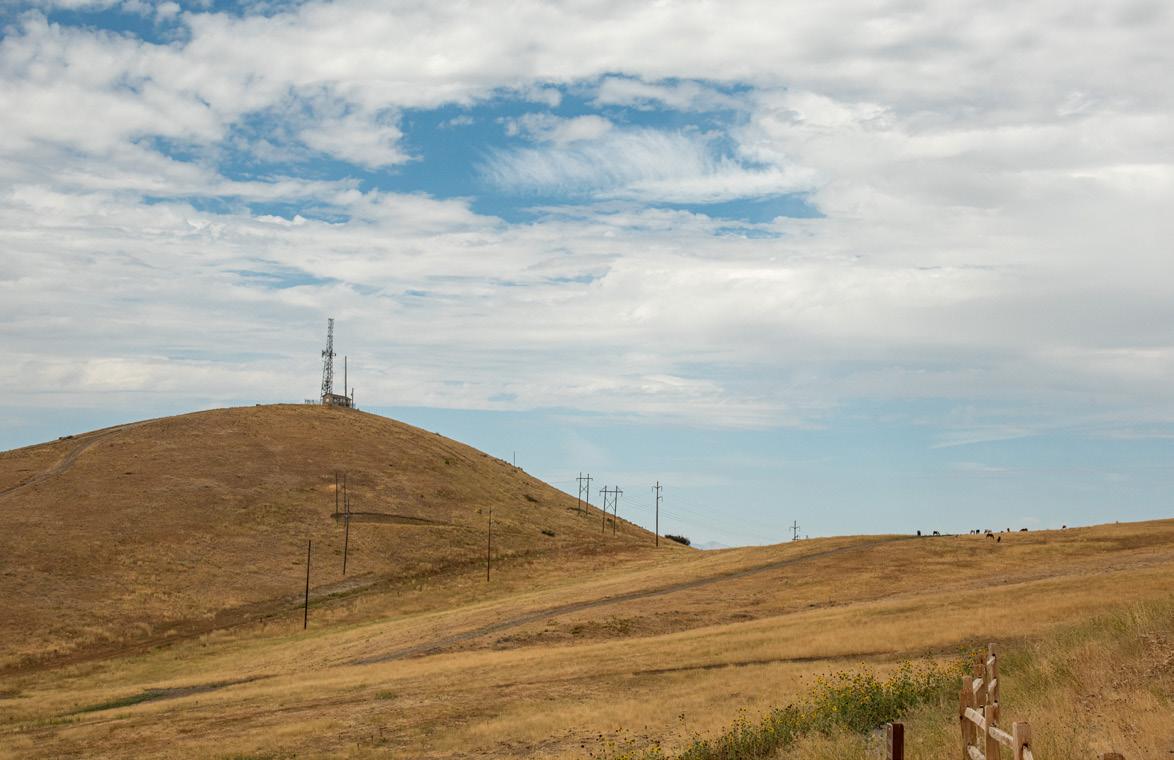
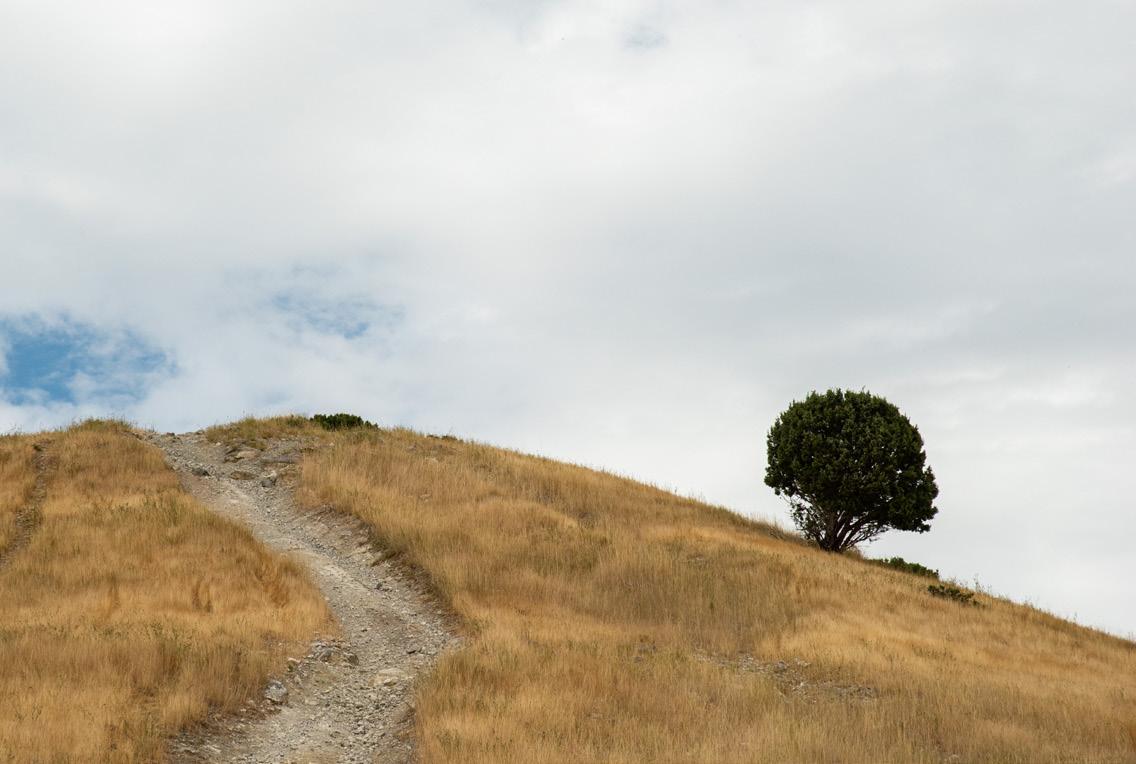


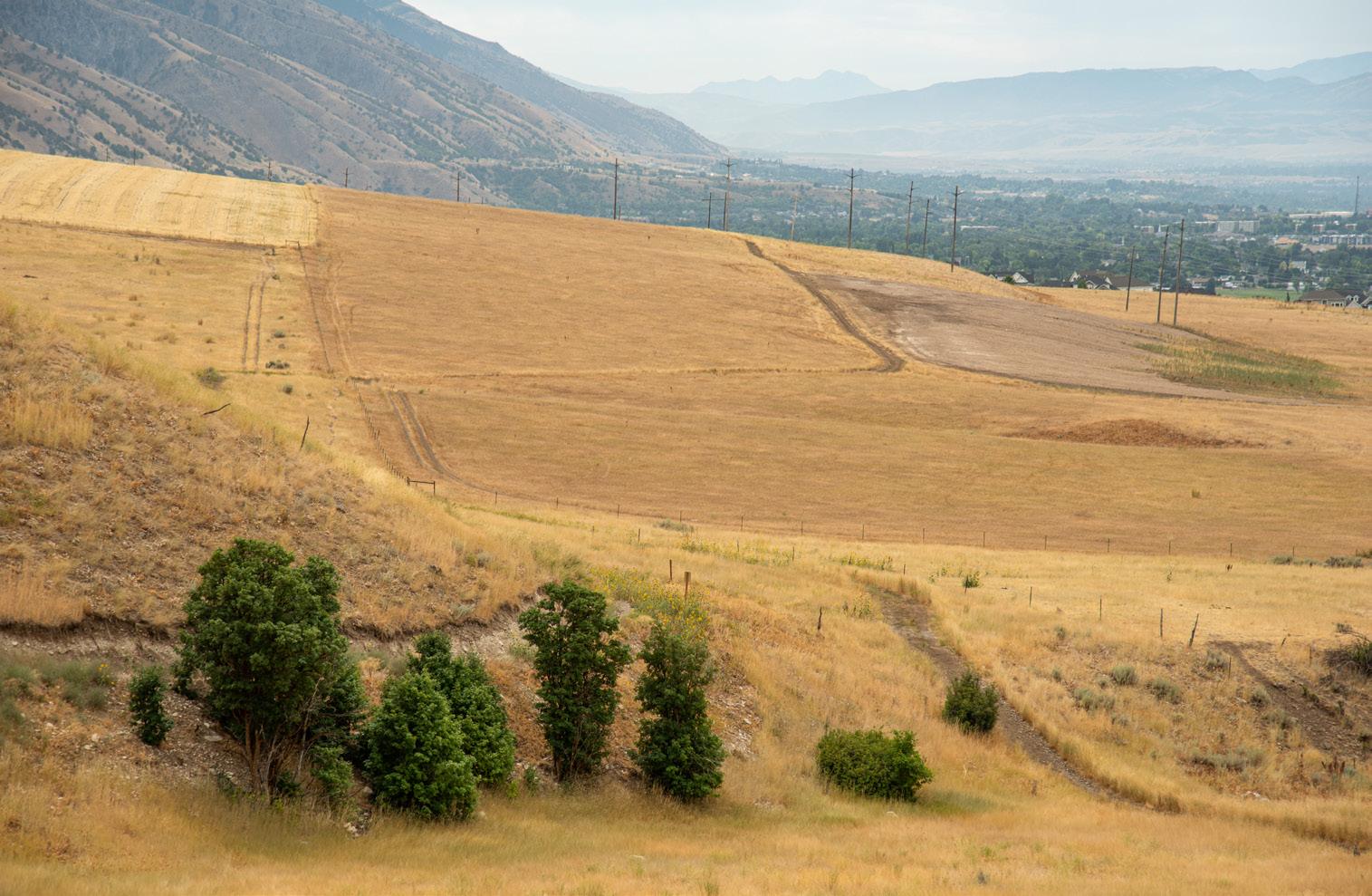

Jack Burton is a semi-talented pixel pusher who can’t find any stunning landscapes to capture despite living on the most beautiful campus this side of the Mississippi. He couldn’t be happier to work with such amazingly passionate people. — jack.burton@usu.edu


Sudoku puzzles are provided by www.sudokuoftheday.com. April 28 solution:




